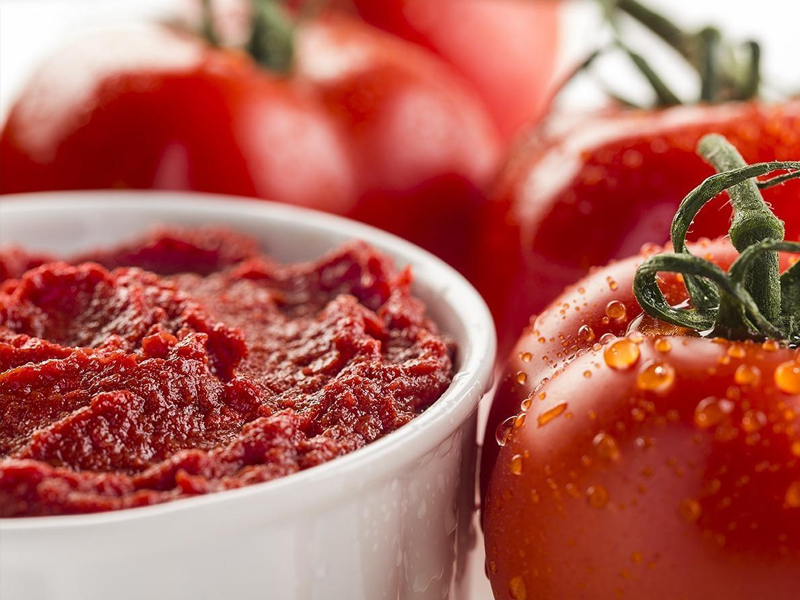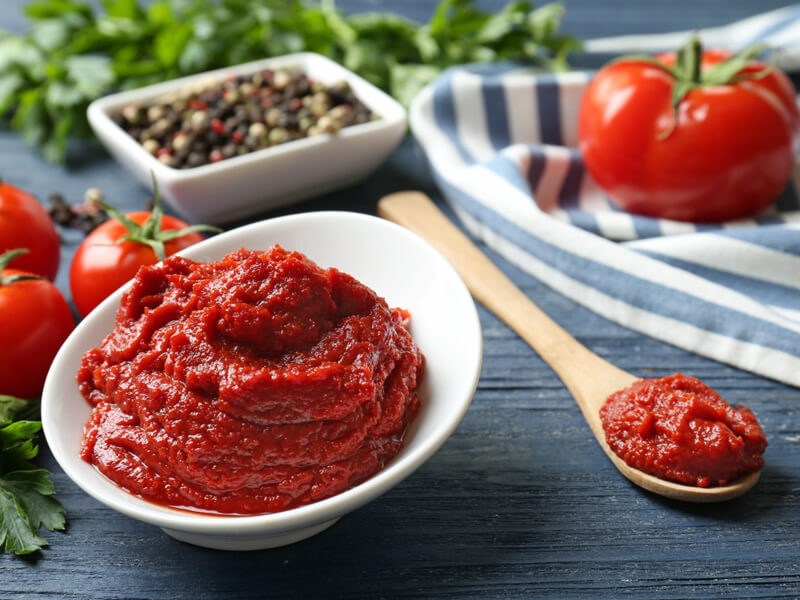The Art of Canning Tomato Paste: A Comprehensive Guide
Introduction:
Canning tomato paste is a centuries-old method of preserving the essence and flavor of ripe tomatoes. Tomato paste serves as a versatile ingredient in various culinary recipes. By canning tomato paste, you can extend its shelf life, ensuring the availability of this vital ingredient throughout the year.
This article aims to provide a comprehensive guide on canning tomato paste. We will discuss the steps involved in the canning process, the required equipment, and safety precautions to consider. Additionally, we will explore the benefits of producing homemade tomato paste and offer tips on storage options to enhance both convenience and quality.
Benefits of Canning Tomato Paste:
1. Quality Control:
By preparing tomato paste at home, you gain complete control over the ingredients and the overall quality of the final product. Often, commercially available tomato pastes contain additives, preservatives, and high levels of sodium. Canning tomato paste yourself allows you to use fresh, organic tomatoes without any additives, resulting in a healthier and more flavorful product.
2. Cost-Effectiveness:
Purchasing canned tomato paste can become expensive, particularly if you frequently use it in your cooking. By canning your own tomato paste, you can save money in the long run, especially during the tomato season when fresh tomatoes are widely available at affordable prices.
3. Convenience:
Canning tomato paste in large quantities will provide you with a pantry staple that can easily elevate any dish. Homemade tomato paste allows for greater flexibility in meal preparation, as you can use it in various recipes including pasta sauces, stews, soups, and more. Having it readily available in your pantry eliminates the need for last-minute grocery runs.
Canning Process:
1. Selecting the Right Tomatoes:
Choose ripe, meaty tomatoes with a deep red color for the best results. Varieties such as Roma tomatoes, San Marzano, and plum tomatoes are ideal due to their dense flesh and low water content.
2. Preparing the Tomatoes:
Start by blanching the tomatoes to remove their skins. Score an “X” at the bottom of each tomato and briefly immerse them in boiling water. After 30 seconds, quickly transfer the tomatoes to an ice bath to stop the cooking process. This will help to easily peel off the skin.
3. Removing Seeds and Excess Water:

Halve the blanched tomatoes and scoop out the seeds and excess water from the pulp. This step helps to concentrate the flavor and consistency of the tomato paste.
4. Cooking and Reducing:
Place the seeded tomatoes in a large pot or pan and cook them over medium heat. Stir occasionally to prevent sticking and scorching. As the tomatoes cook down, they will gradually reduce in volume and thicken into a concentrated paste-like consistency.
5. Sterilizing Jars and Lids:
While the tomato paste is cooking, prepare your canning jars and lids. Wash them thoroughly in hot, soapy water and sterilize them by submerging them in boiling water for approximately 10 minutes.
6. Filling and Sealing the Jars:
Carefully transfer the hot tomato paste into the sterilized jars, leaving about ½ inch of headspace at the top of each jar. Ensure the rims of the jars are clean and dry, and then cap them tightly with the sterilized lids.
7. Processing the Jars:
Process the filled jars in a water bath canner. Place the sealed jars in a large pot filled with enough boiling water to completely submerge the jars. Process them for the recommended time, usually around 35-45 minutes, depending on your altitude.
8. Cooling and Storing:
Once the processing time is complete, carefully remove the jars from the canner and place them on a clean towel or cooling rack. Allow them to cool naturally at room temperature for 12-24 hours. Check that the lids have properly sealed by pressing on the center of each lid; they should be firm and not move. Store the jars in a cool, dark place for up to one year.
Safety Precautions:
1. Use proper canning techniques and follow reliable recipes to ensure the safety of your canned tomato paste.
2. Inspect each jar and lid for any signs of damage or defects before use. Discard and do not consume any jars with compromised seals or damaged lids.
3. Store canned tomato paste in a cool and dark area to maintain its quality and extend its shelf life.
Storage Options:
1. Traditional Canning Jars:
Use standard canning jars with two-piece lids that feature a rubber seal and metal ring. This type of jar is ideal for long-term storage and can be reused for subsequent canning projects.

2. Freezer Containers:
To preserve the freshness and quality of your homemade tomato paste, consider freezing it. Use airtight freezer-safe containers or ice cube trays for smaller portions. Be sure to leave enough headspace in the container to allow for expansion during freezing.
3. Vacuum-Sealed Bags:
Utilize vacuum-sealed bags to store smaller portions of tomato paste. This method is ideal for those who do not have sufficient freezer space. Vacuum sealing removes excess air, helping to prevent freezer burn and maintain the quality of the tomato paste.
Conclusion:
Canning tomato paste at home provides you with a delicious, high-quality ingredient that can enhance your culinary endeavors throughout the year. By following the steps outlined in this comprehensive guide, you can take control of the canning process, while enjoying the benefits of cost savings, quality control, and convenience. Whether stored in traditional canning jars, freezer containers, or vacuum-sealed bags, your homemade tomato paste will add depth and richness to a wide range of dishes, elevating your cooking to new heights.I. The Growing Demand for Canned Tomato Paste:
The demand for canned tomato paste has been steadily increasing in recent years, driven by several factors. Firstly, the convenience and versatility of tomato paste have made it a staple in many households and commercial kitchens. With its concentrated flavor, it adds depth and richness to a wide array of dishes, from pasta sauces to curry pastes and soups.
Additionally, the growing awareness of the health benefits associated with homemade and organic products has influenced consumer preferences. Canning tomato paste at home allows individuals to control the ingredients used, ensuring a healthier and more natural product without any added preservatives or artificial substances.
The rise of global cuisines and the popularity of homemade meals has also contributed to the increased demand for canned tomato paste. As people seek to explore and experiment with different flavors, tomato paste serves as a vital ingredient that adds complexity and richness to a variety of dishes.
II. The Business Potential of Canning Tomato Paste:
1. Home-Based Business Opportunities:
Given the growing interest in homemade and organic products, starting a small-scale canning operation can be a viable business opportunity. By producing and selling canned tomato paste, entrepreneurs can tap into the demand for high-quality, preservative-free products. This can be done through local farmer’s markets, online platforms, or establishing partnerships with independent retailers.
2. Contract Manufacturing:
For businesses that lack the resources or infrastructure to produce canned tomato paste on their own, partnering with a contract manufacturer can be a strategic move. Contract manufacturing allows businesses to leverage the expertise and facilities of a specialized company to produce their product at scale. This enables them to meet the growing demand for canned tomato paste without significant upfront investment.
III. Quality Control: Ensuring Consistent and Flavorsome Product
Maintaining consistent quality is crucial in the canned tomato paste business. Here are a few key aspects to consider:
1. Sourcing: Partnering with reliable suppliers who provide high-quality tomatoes is essential. Look for suppliers who prioritize organic and sustainably grown produce. Regularly inspect and evaluate your suppliers to ensure their tomatoes meet your quality standards.
2. Production Process: Implementing stringent quality control measures throughout the production process is critical. This includes monitoring the cooking temperature and duration, ensuring proper hygiene practices, and conducting frequent quality checks to eliminate any batch-to-batch variations.

3. Flavor Enhancement: To differentiate your canned tomato paste, consider adding unique flavor profiles through the inclusion of herbs, spices, or even specialty tomato varieties. Experiment with different blends to offer consumers a diverse range of options.
IV. Building a Strong Brand:
1. Packaging Design: Invest in eye-catching and informative packaging that reflects the quality and uniqueness of your product. Thoughtfully designed labels that highlight the organic and homemade nature of your tomato paste can attract discerning customers.
2. Branding and Marketing: Develop a strong brand identity that resonates with your target market. Clearly communicate the value propositions and benefits of your canned tomato paste through different marketing channels such as websites, social media platforms, and traditional advertising mediums.
3. Customer Engagement: Establish a direct line of communication with your customers through various channels, such as social media, emails, or a dedicated customer support line. This will allow you to gather feedback, address concerns, and build brand loyalty.
V. Maintaining Food Safety and Regulatory Compliance:
Operating a canning business requires strict adherence to food safety regulations to ensure the health and well-being of consumers. Consider the following areas when establishing your business:
1. Facility and Equipment: Make sure your processing facility is designed and equipped to meet the necessary sanitary standards. Regularly maintain and clean your equipment to prevent cross-contamination and ensure safe food handling practices.
2. Proper Canning Techniques: Stay updated on the recommended canning procedures and guidelines provided by reputable sources, such as the United States Department of Agriculture (USDA) or your country’s local regulatory bodies. Implement proper heat processing techniques to eliminate the risk of harmful bacteria and ensure product safety.
3. Labeling and Certification: Comply with all labeling regulations, including the accurate listing of ingredients, nutritional information, and allergen warnings. Obtain necessary certifications and registrations to demonstrate your commitment to quality and safety.
VI. Distribution and Market Reach:
1. Retail Partnerships: Establish relationships with local grocers, specialty food stores, and supermarkets to widen your distribution network. Offer attractive pricing, promotional support, and excellent customer service to encourage retailers to stock your canned tomato paste.
2. Online Presence: Embrace e-commerce platforms to reach customers beyond your immediate geography. Develop an engaging website with a secure online shopping system, and utilize digital marketing strategies to drive traffic and conversions to your online store.
3. Food Service Channels: Explore partnerships with restaurants, catering businesses, and other food service providers to incorporate your canned tomato paste into their offerings. Develop tailored solutions for these channels, such as bulk packaging or specific product variations to cater to their unique requirements.
VII. Continuous Innovation and Expansion:
To stay competitive and meet the evolving needs of consumers, consider these strategies to drive growth in your canned tomato paste business:
1. Product Diversification: Expand your product line to include different flavor variations, such as roasted tomato paste, garlic-infused tomato paste, or even gourmet options that incorporate unique ingredients. This allows you to cater to a broader consumer base that seeks unique flavor profiles.
2. Sustainable Packaging Solutions: As environmental concerns become increasingly significant, invest in sustainable packaging options, such as recyclable or biodegradable materials. This proactive step aligns your business with the values of environmentally conscious consumers.

3. Regional and International Expansion: Once established in your local market, explore opportunities for regional and international expansion. Conduct market research to identify potential target markets and adapt your product and marketing strategies accordingly.
Conclusion:
Canning tomato paste presents various business opportunities in an industry driven by the growing demand for high-quality, preservative-free products. By emphasizing quality control, building a strong brand, ensuring food safety, and expanding distribution channels, entrepreneurs can carve out a niche in this market. Moreover, continuous innovation and staying abreast of consumer trends will enable businesses to thrive and provide customers with a flavorsome and reliable canned tomato paste throughout the year.









